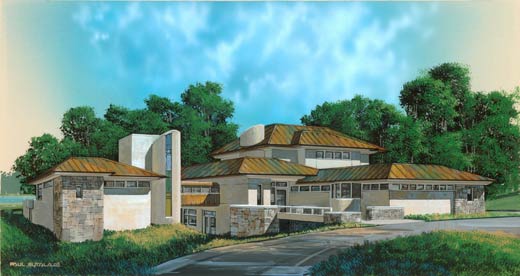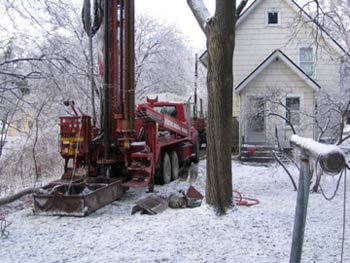 How we restored our historic home and reduced our carbon footprintby Kelly and Matthew Grocoff
How we restored our historic home and reduced our carbon footprintby Kelly and Matthew GrocoffWhen we bought our 107 year old home on Ann Arbor's Historic Old West Side, it was a dream come true: lead paint, zero insulation, a half-century old furnace, asbestos siding, and a gas powered mower in the shed. What more could a couple of treehuggers ask for?
We wanted to buy a historic home, turn it green and prove that, even on our limited budget, we could create a home of unparalleled comfort and design while using less energy and water and fewer natural resources and toxic chemicals. Our efforts have rewarded us (and the planet) with an approximate 50% reduction in energy bills compared to similar sized homes in Michigan. As energy prices rise with global temperatures, our home will increase in value as well.

We always joke that there are three things that set back the environmental movement: the original low flow showerhead, the original low flush toilet, and Jimmy Carter's sweater (Kelly would add a fourth: silken tofu). These icons perpetuated the myth that living green meant paying more while sacrificing quality, performance and comfort. We wanted to restore our home using Environmentalism 2.0, which means improved quality, performance, efficiency, value, health and comfort.
In upcoming articles, we will share the choices we made when renovating our historic home. We will review the little stuff and the big stuff. We separate our efforts into those which can be done easily and inexpensively (the little stuff) versus those that require larger investments of time and money, but create higher long term savings (the big stuff). Both are important and both go a long way towards reducing your carbon footprint.
It is important to imagine the day when all homes are carbon neutral, but don't wait for the windmills or affordable solar panels! We developed a plan based on our budget, the historic standards of our neighborhood, and how we wanted our home to look and feel.
We included a large portion of our renovation costs in our mortgage. The first step was deciding how to allocate the money. We prioritized in order of energy consumption, working our way from the worst offenders to the petty criminals. In other words, we started with the big stuff.

The most hardened criminal in most homes is heating, cooling and hot water systems, which account for 58% of home energy use. We chose a hyper-efficient geothermal HVAC system (also called a ground source heat pump or geoexchange), and then moved on to the little stuff like cost effective motion sensor lighting controls and compact fluorescent lights. Remember, the cheapest form of energy is the unused kilowatt.
A green home isn't only about energy efficiency, but also about health and sustainability. With each decision we made we asked ourselves: 1. can we buy reused instead of new materials? 2. is it durable? 3. can we purchase locally? 4. how can we reduce construction waste? 5. will this harm air or water quality? 6. will this harm us, our guests or our community? 7. how was this product made?

In our modest home, our improvements seem small compared to all we need to do to curb climate change. However, choices we've made are being rapidly adopted by others and are often becoming policy. In California, the motion sensors we installed are now mandatory in all new residential construction. Our geothermal system reduces greenhouse gases equivalent to taking two cars off the road! We hope to see Michigan adopting progressive policies and incentives soon.
In a coming article, we will share with you the details of what we've done to green our home and what you can do to green yours - easily, affordably and elegantly. It's inspiring to know that not only can we improve the comfort, efficiency and health of our home, but be part of a collective monumental change.
To schedule a group tour of our Ann Arbor home you can contact us at greenovationtv@gmail.com
Coming soon . . . GreenovationTV.com - the world's first internet TV station for healthy home improvement.










